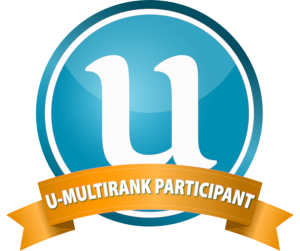Basics and Methodology of Athletics Exercises (LSPA_225)
About Study Course
Objective
To learn different types of movement and types of moving objects, to acquire theoretical knowledge, practical skills and skills in teaching different types of movement and types of moving objects at all stages of education, in accordance with the competences provided for in the Teacher’s standard, Pre-School Education Guidelines and content requirements of Health and Physical Activity Education in section Movement.
Prerequisites
Study courses mastered: Teacher’s Professional Skills, Social-Emotional Learning, Teaching and Learning in the Context of Diversity, General and Physical Activity Biochemistry, Foundations and Methodology of Volleyball, Foundations and Methodology of Gymnastics, History of Sport or Philosophy of Sport.
Learning outcomes
1.1. Origin, history and development of track and field disciplines in Latvia and worldwide.
2. Methodology for teaching techniques and tactics of track and field disciplines (teaching methods, study aids, forms of organisation of sports classes).
3. Formative, summative assessment and self-assessment in learning track and field exercises.
1.4. Demonstrates different movement methods (walking, running, jumping) and movement of objects (throwing) at all levels of education.
5. Practically plans, leads track and field exercises and assesses their learning in accordance with state pre-school education guidelines, the requirements of the state basic education standard and the state secondary education standard in the field of studies. Demonstrates the skills learned in modified track and field discipline competitions.
1.6. Able to plan, lead an interdisciplinary and individualised learning process in various activities involving track and field exercises.
7. Able to critically analyse and evaluate the pedagogical aids, methods, techniques and track and field aids used, their compliance with students’ abilities and education goals in diverse health-promoting track and field exercise activities.
8. Able to take responsibility for classes with track and field exercises and safety of events at school.
9. Able to establish clear performance and growth assessment criteria and testing methods for students.
10. Able to analyse learning outcomes and track student’s growth, identify support measures needed to improve learning performance.
11. Able to provide feedback in the assessment of both the students and their activities.
12. Able to creatively choose study aids in learning track and field exercises by integrating health and safety content, other subject areas, transversal skills and values.
13. Able to identify security hazards and risks in different environments and situations during track and field exercises, take preventive safety measures, choosing the most appropriate problem-solving strategies.
Study course planning
| Study programme | Study semester | Program level | Study course category | Lecturers | Schedule |
|---|---|---|---|---|---|
| Health, physical activity and security (sports and health teacher) | 2 | Bachelor | Limited choice | Sandra Škutāne | |
| Health, physical activity and security (sports, health and national defense teacher) | 2 | Bachelor | Limited choice | Sandra Škutāne | |
| Health, physical activity and security (sports, health and national defense teacher) | 2 | Bachelor | Limited choice | Sandra Škutāne | |
| Health, physical activity and security (sports and health teacher) | 1 | Bachelor | Limited choice | Sandra Škutāne | |
| Health, physical activity and security (sports and health teacher) | 2 | Bachelor | Limited choice | Sandra Škutāne | |
| Health, physical activity and security (sports, health and national defense teacher) | 1 | Bachelor | Limited choice | Sandra Škutāne |



